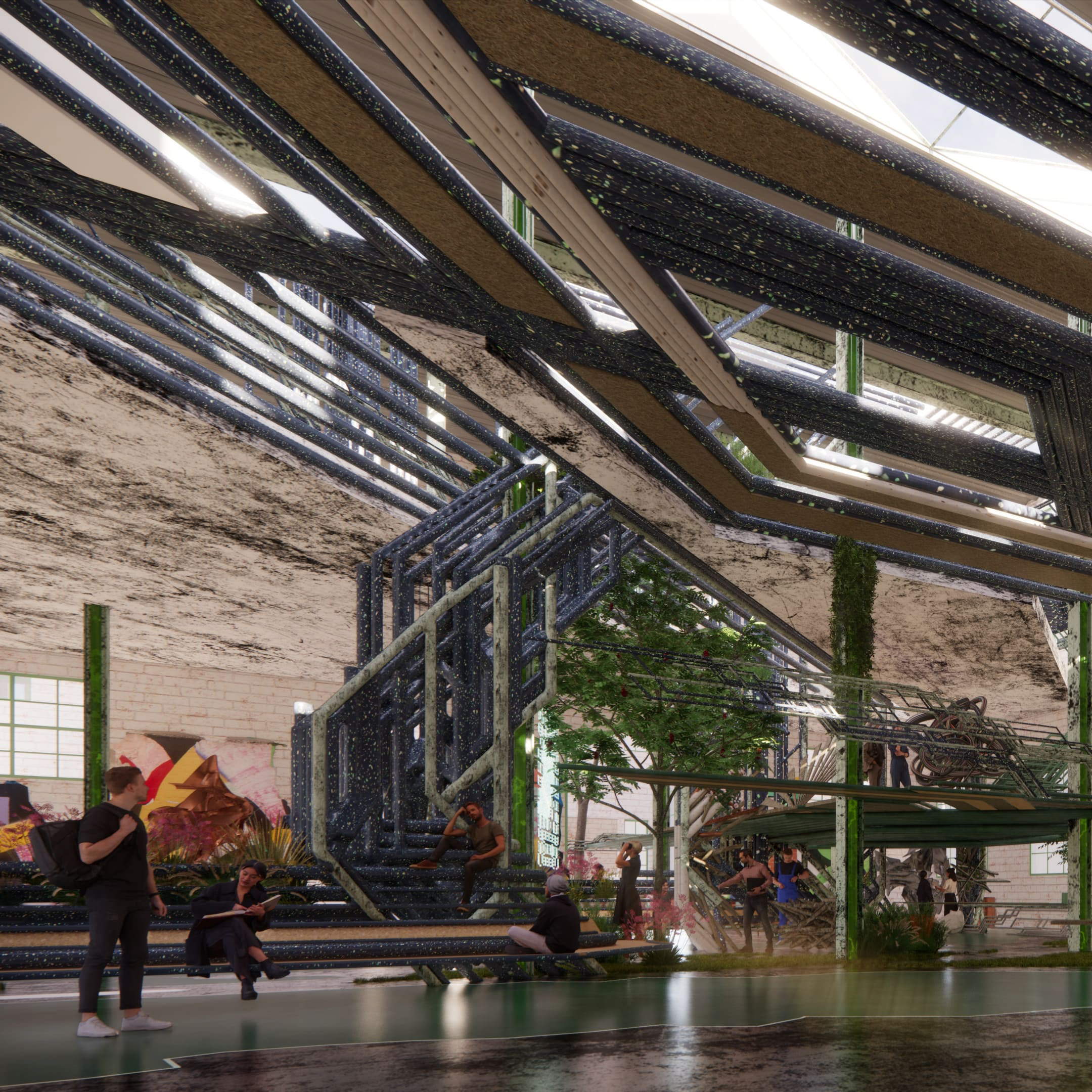#parametric-design #Grasshopper #3D-modelling #Rhino3D
#KUKA #CNC-machining #laser-cutting
#3D-spatial-exploration #2D-spatial-exploration
Light belongs to the portion of the electromagnetic spectrum that can be detected by the human eye. Light is simply radiation energy that does not require a medium to propagate. Light waves have the capacity to bounce and be redirected through reflective surfaces. An example of this principle can be traced back to old lighthouses, where reflective lens are utilized to split and precisely redirect light beams for the sake of orientation.
Artificial lighting has been one of the greatest achievement in human history. At the same time, its exaggerated implementation has disrupted our circadian rhythms and weakened our bond with the natural realm. We want to explore notions of illumination solely using solar radiation energy, for there is no artificial light comparable to the unique experience or pure and sheer sunlight.
Sunlight rays can be reflected and diverted, indirectly illuminating otherwise unexposed surfaces. In order to study this phenomenon further, we designed and developed an energy-showcasing device.
Closed-Loop Device Prototype
This closed-loop device, composed of an LED light, a solenoid, a concave mirror filled with water, and a light sensor was installed in a dark room, visualizes a wave pattern from the surface of the water onto the wall. The light sensor constantly sends data to the solenoid changing the frequencies of its vibrations, resulting in variation of light patterns and intensities which in turn affect the light sensor again. The water serves as a transmission medium for the projected light.
SITE SELECTION FOR PROJECT PROPOSAL
While choosing a site on the Barcelona/Bilbao axis, we looked for the following qualities: the proximity to a residential context, the maximal sun exposure, and the location over a body of water.
The site, located in the province of Girona in northeastern Catalonia over the Lake of Banyoles’ north shore, offers the optimal conditions. It is fully exposed to the sun on its east, south and west side due to the fact that there are no obstacles in its ways and the surrounding is flat. We then conducted a sun path analysis to identify the widest range of radiation angles during the span of one day, comparing the extremes between summer and winter solstices.
Sun Path Analysis
Based on the results from our device, in combination with our research on the behavior and intensity of light reflection waves hitting a water body, we translated the phenomena into the architectural space.
This space is defined by a variation of specific parameters interrelated with the angles of the sun at set times of the day:
1) the depth & height of the reflective surface submerged underneath the water
2) the depth of the habitable space
3) the height of the habitable space
4) the depth of the awning
5) the size of the gap above and below the curtain.
RESULTS
A) The curved walls acts as projection surface for the reflection, enabling an uninterrupted progression of light from lowest to highest angle.
B) The curtain serves as a screen to block direct sunlight from coming into the space, only letting in reflected and diffused light, but can be opened and closed at the user's will.
C) A reflective medium right underneath the water surface to achieve stronger reflections.
D) The symmetry of the sun path resulted in the creation of a mirror axis, in order to display the widest range of light reflections.
The module’s circular form as well as the submerged ring-like reflective surface is a direct response to the sun path analysis. The central space is shifted towards the north to maximize space utilization in the south. The depth of the reflective surface, the position of the curtain and the interior space vary around the module. The resultant wave patterns produced inside the structure additionally reveal the weather condition causing them.
Caustics inside the house
Development of space programming based on time of day + sunlight hours mapped across the structure
Structure on site in the Lake of Banyoles’ north shore
Applying space/time programming from Original structure at a larger & more extensive scale
The house, based on land, extends out into the water.
The interior is divided into a series of spaces based on the pattern of the project reflected light and accordingly, furniture was added. In this way, the user’s path throughout the day is mapped to the path of the sun.
Through plan and section one can see the transition from daytime living to nighttime living as well as the continuity and openness of the spaces.
Envisioning and designing the house as a clock, the user’s body becomes the minute hand. The light reflections progress through the house as the sun progresses in the sky, and guide the users throughout their day, tuning them back into their circadian rhythms and enriching their living experience.
video of 1:5 sectional model
filmed using KUKA



